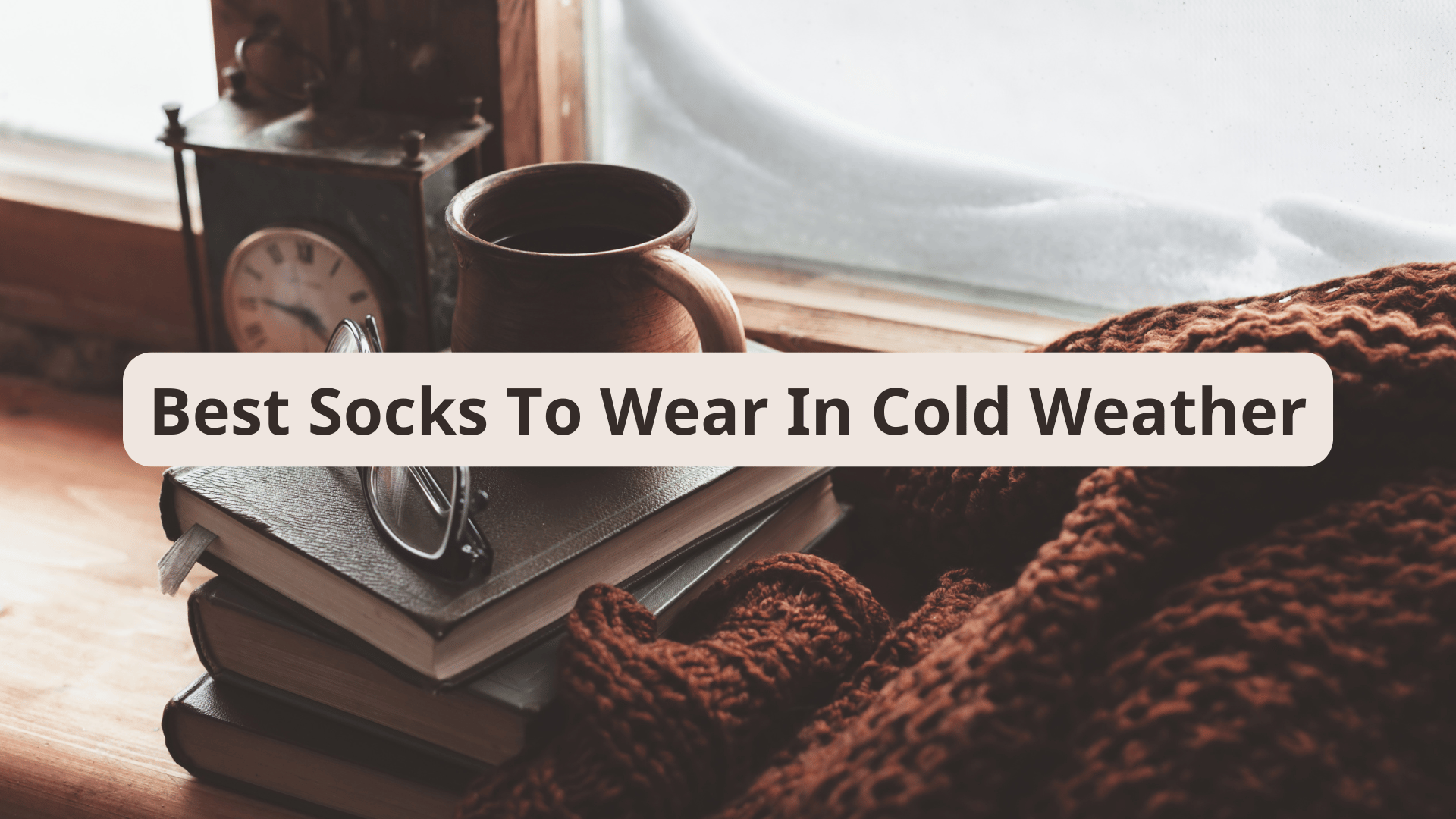The Ultimate Guide to the Best Cold Weather Socks for Ultimate Warmth
When the winter chill sets in, the first line of defense for your comfort often starts with your feet. Battling cold feet is a universal struggle, but the solution is far more nuanced than simply grabbing the first pair of thick socks you find. The secret to keeping your feet warm and comfortable lies in the material, construction, and purpose-built design of your socks. Whether you're navigating a frosty commute, enjoying winter hiking, or hitting the slopes, the right pair of warm socks is a non-negotiable part of your gear.
This guide will explore everything you need to know about choosing the best cold weather socks. We'll delve into the science behind why materials like merino wool are superior, what features to look for in thermal socks, and how a proper fit can be a game-changer for all-day comfort. Say goodbye to numb toes and hello to a cozy winter long.
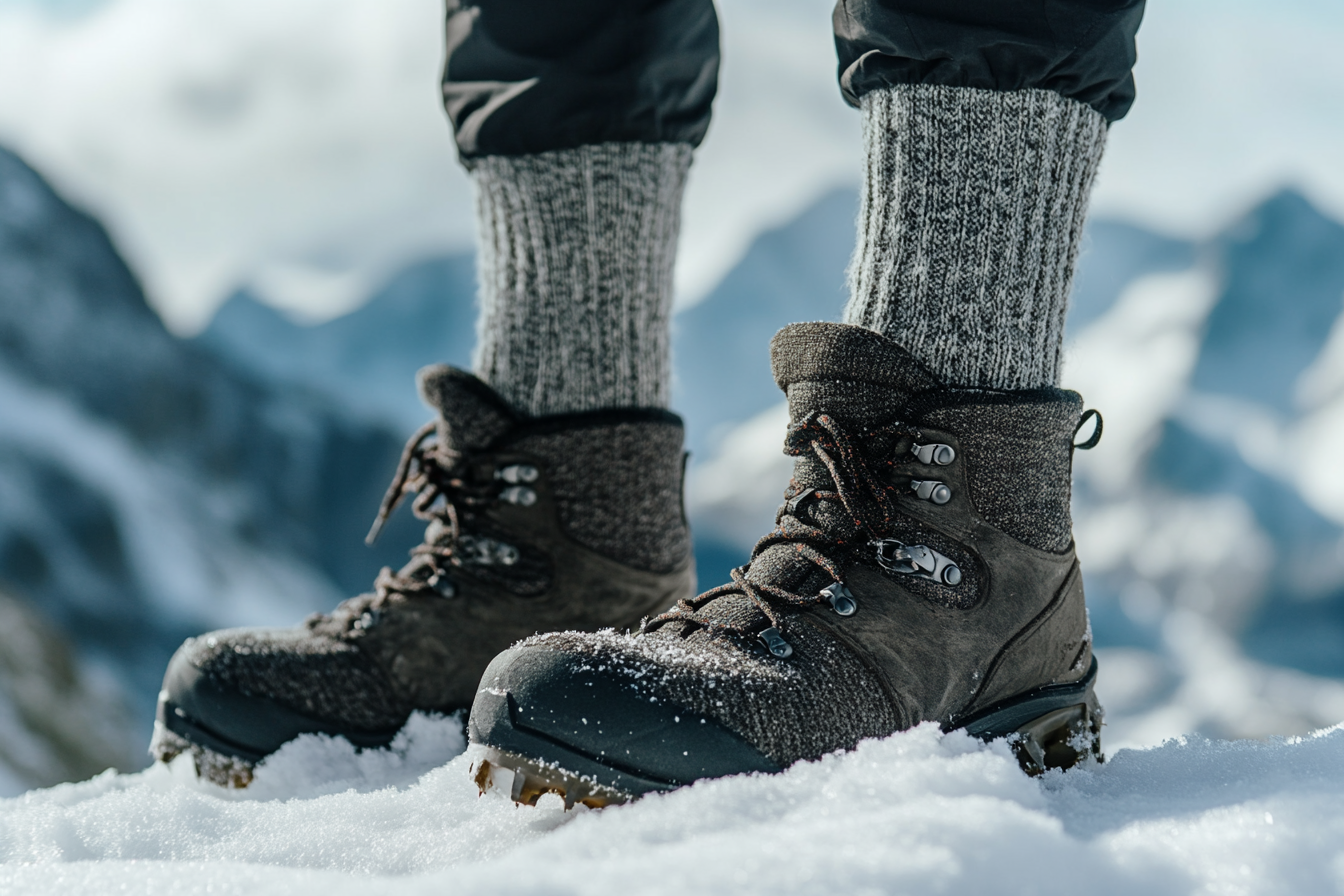
What Type of Sock is Best for Cold Weather? The Great Material Debate
The foundation of any great pair of winter socks is the material. The right fabric is what stands between you and the biting cold, managing moisture and trapping heat effectively. For anyone experiencing cold weather, understanding these materials is key.
Merino Wool: The Gold Standard for Warm Socks
When it comes to performance in cold weather, merino wool reigns supreme. This natural fiber is a powerhouse of insulation and comfort, making it the top choice for many of the best socks on the market. Unlike traditional wool, merino wool fibers are finer and softer, meaning they don't have the itchiness you might associate with other wool socks.
Here’s why merino wool socks are a must-have:
Superior Insulation: Merino wool creates small air pockets that trap body heat, keeping your feet warm even in freezing temperatures. These are truly effective warm socks.
Moisture Wicking: It can absorb up to 30% of its weight in moisture before feeling damp. This moisture wicking ability pulls sweat away from your skin, which is crucial because wet feet lead to cold feet much faster. This keeps your feet dry.
Temperature Regulating: The breathable nature of merino wool means your feet won't overheat. It keeps you warm when it's cold and helps keep your feet cool when you're active.
Odor Resistance: Merino wool is naturally antimicrobial, which means your socks will stay fresher for longer.
Many top brands, including Smartwool socks and Darn Tough, rely heavily on merino wool blends for their high-performance hiking socks and ski socks. The incredible properties of this wool make these socks a worthwhile investment.
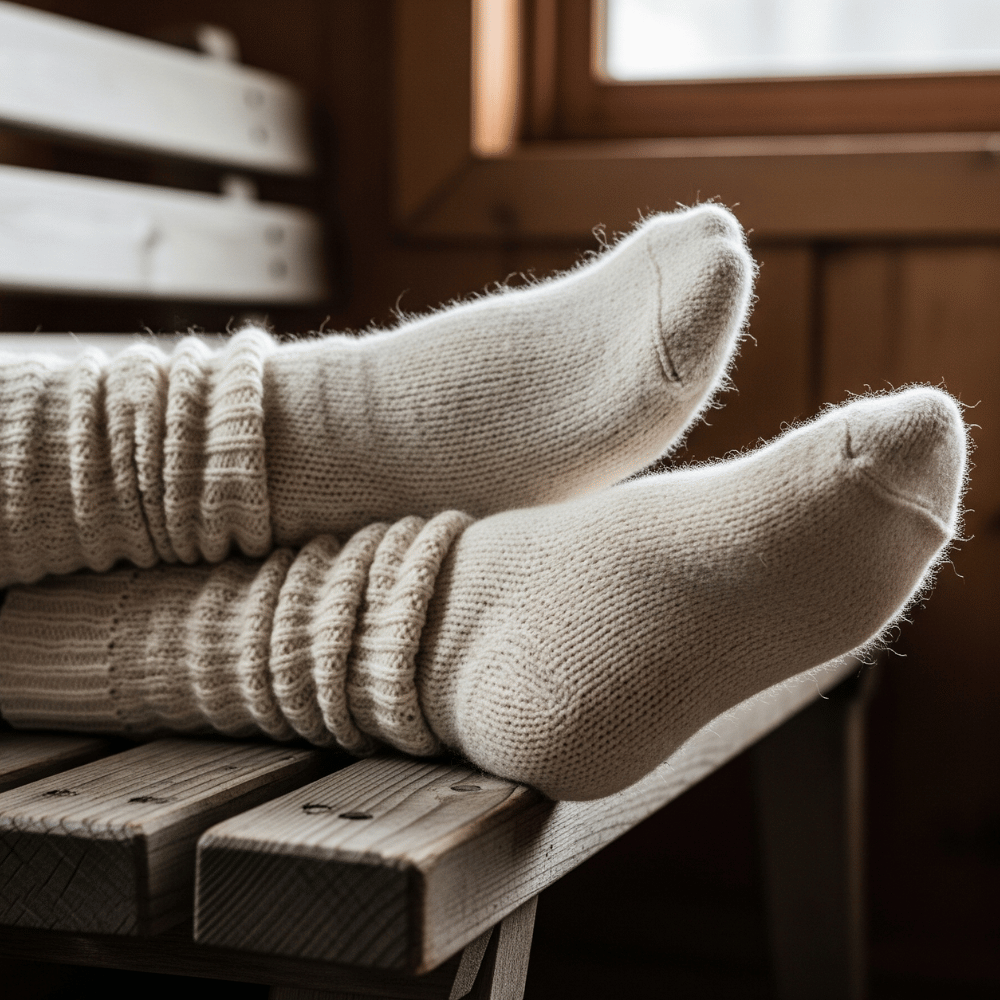
Alpaca Wool Socks: Luxurious Warmth
For those seeking a touch of luxury with their warmth, alpaca wool socks are an excellent alternative. Alpaca fibers are hollow, giving them an exceptional ability to trap heat. They are often considered even warmer than merino wool and are incredibly soft and lightweight. If you have sensitive skin, you’ll be happy to know that alpaca wool socks are hypoallergenic as they lack lanolin. These properties make them some of the best winter socks available. Consider adding alpaca insoles to your boots for an extra layer of defense against the cold.
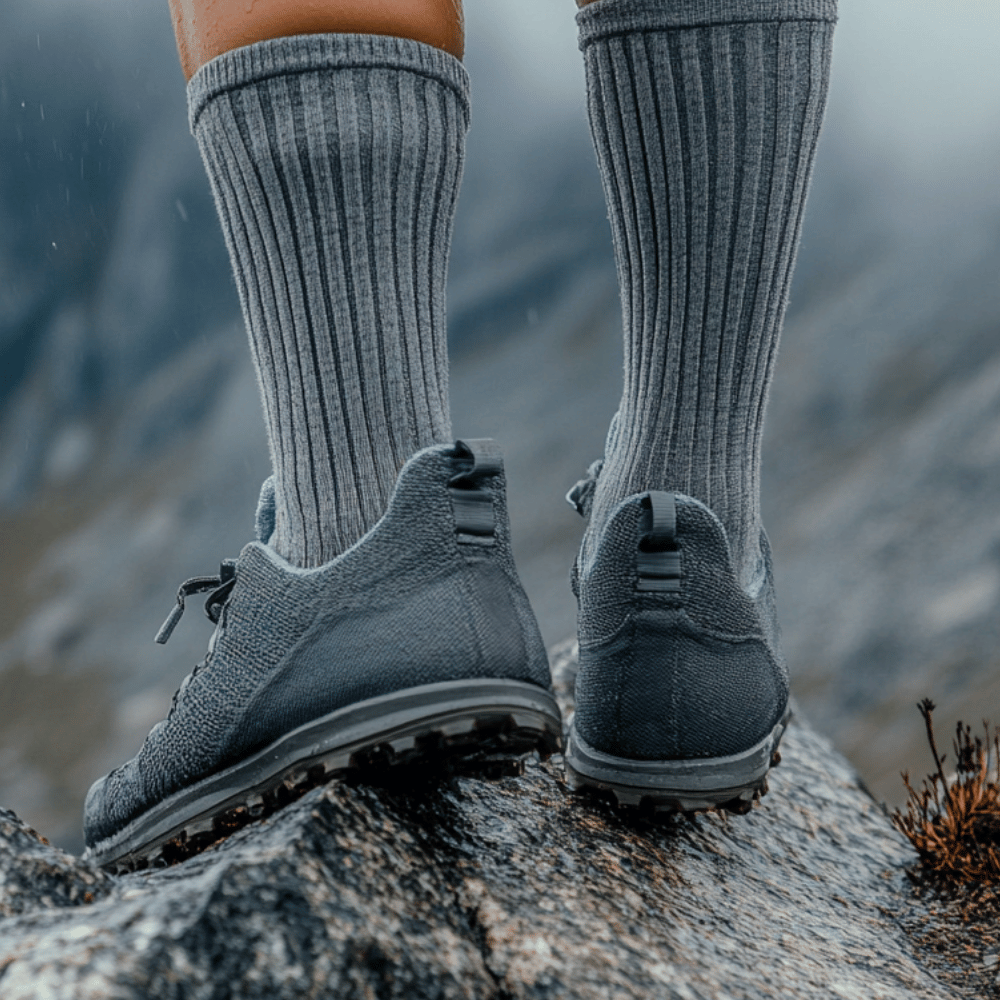
Synthetic Materials: Engineering for Performance
While natural fibers are fantastic, don't overlook the role of synthetic materials like nylon, polyester, and spandex. Most high-quality cold weather socks are actually a blend of wool and synthetics. These blends are engineered to enhance durability, elasticity, and moisture wicking capabilities. They help the socks hold their shape, provide a snug fit, and dry faster than 100% wool socks. These moisture wicking fabrics ensure your feet sweat less and stay comfortable.
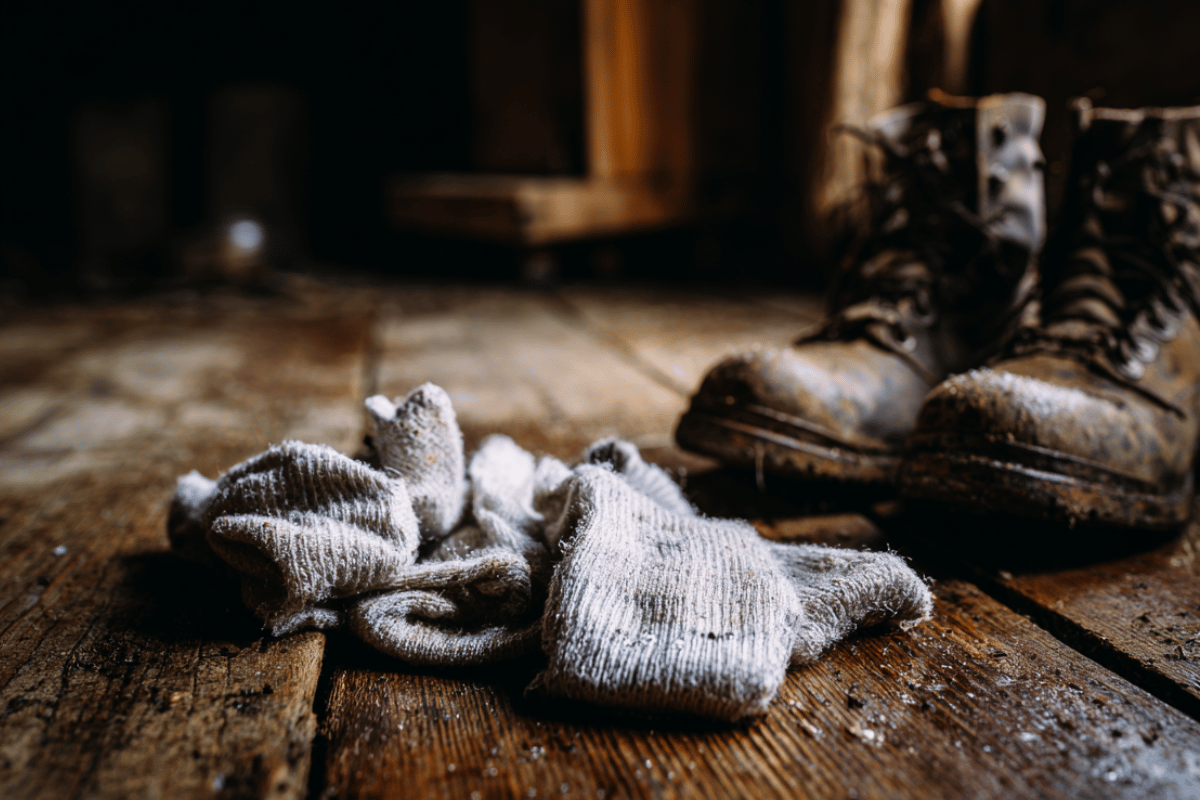
Why You Must Avoid Cotton Socks in Winter
Here’s a critical piece of advice: avoid cotton socks in the winter. Cotton is highly absorbent and loses all its insulating properties the moment it gets wet from sweat or snow. Instead of wicking moisture, it holds it against your skin, rapidly cooling your feet and dramatically increasing the risk of blisters and making your feet cold. When choosing winter socks, leaving the cotton pairs in your drawer is the first step toward warm feet.
What Are the Warmest Socks to Wear in the Winter?
When the goal is maximum warmth, you need to look for socks specifically designed for extreme cold. These are often marketed as thermal socks or heavyweight socks.
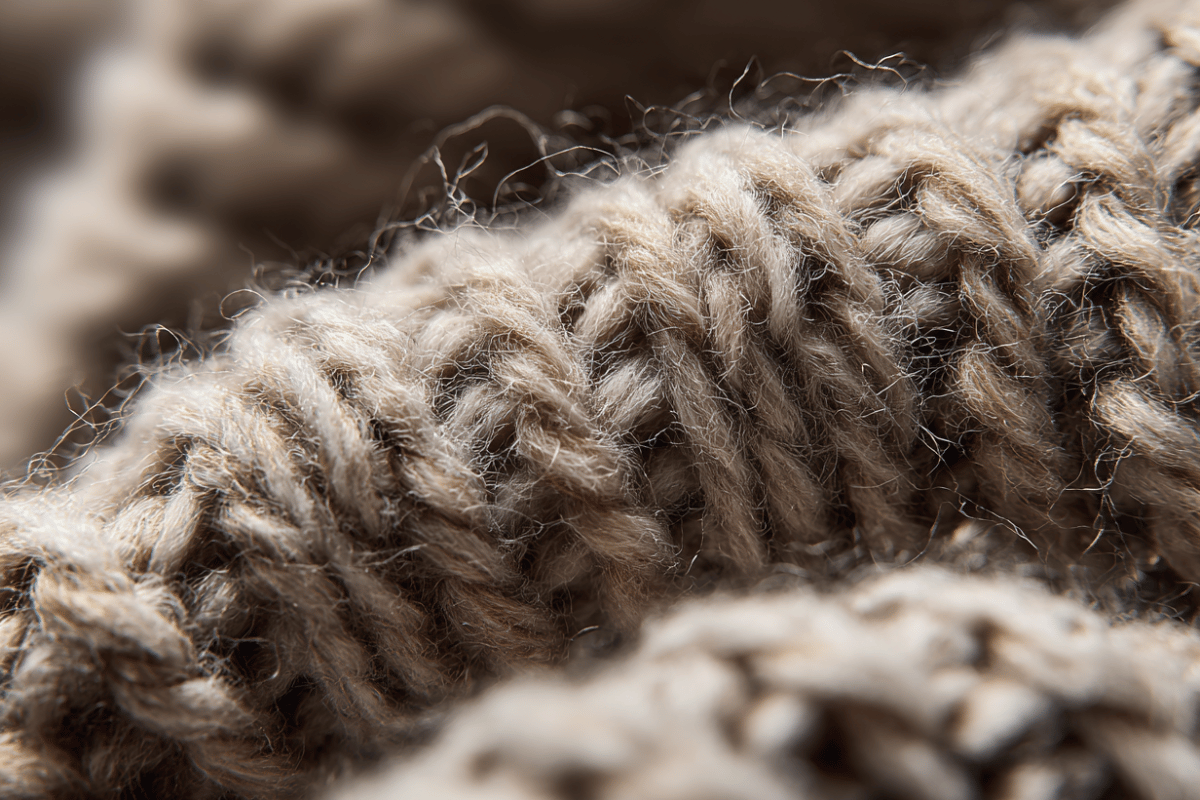
The Power of Thermal Socks
Thermal socks are engineered for one primary purpose: to provide all the warmth you need. They achieve this through a combination of superior materials and construction. Many thermal socks use a thick, looped knitting technique on the inside (terry loop construction) which creates a dense cushion of air around your foot. This trapped air is warmed by your body heat, providing a powerful thermal barrier. These thermal socks are often the best socks for standing in the cold for long periods.
When you wear these socks, you're getting serious insulation. Look for thermal socks that explicitly mention their insulating properties. They are thicker than standard wool socks and provide great warmth.
Layering Socks: The Liner Sock Strategy
For the most extreme cold, or for people whose feet get cold easily, layering your socks can be a true game changer. This technique involves wearing a thin, lightweight liner sock underneath a thicker, warmer sock.
The liner sock, typically made from a synthetic wicking material or silk, pulls moisture directly away from your foot. The outer sock, often a pair of heavyweight socks made from merino wool, then provides the primary insulation. This system is incredibly effective at keeping your feet dry and warm. A good liner sock is thin and won't make your boots feel too tight. You should practice with your liner sock and outer socks to ensure your boots still fit correctly.
What Socks Do They Wear in the Arctic?
In the harshest environments on Earth, staying warm is a matter of survival. People in the Arctic rely on a combination of the principles we've discussed. They prioritize materials with the highest warmth-to-weight ratio and often use a layering system. This typically includes a moisture-wicking liner sock and one or two pairs of very thick wool socks or fleece socks. Their outer footwear, often insulated rubber boots or specialized pac boots, is sized up to accommodate these multiple layers of socks without constricting blood flow. The goal is ultimate warmth while ensuring the feet can still breathe.
Key Features to Look For in the Best Cold Weather Socks
Beyond the material, several key features separate a mediocre pair of socks from a great one.
Fit and Compression: Snug, Not Tight
A proper fit is essential. Your socks should be snug enough to stay up without sagging or bunching, which can cause blisters. However, socks that are too tight can restrict blood flow, which will ironically make your feet cold. Some winter socks, like ski socks, incorporate zones of light compression socks technology around the ankle and arch. This can help improve circulation and provide support for all day wear without being overly constricting. Ensuring your core warm is also important, as the body will restrict blood to the extremities when your core is cold.
Cushioning and Padding
Look for socks with extra cushioning in the heel and ball of the foot. This not only adds comfort and shock absorption, which is vital for winter walking or hiking socks, but the extra thickness also adds insulation. Many ski socks and snowboard socks have targeted padding on the shin to protect from the pressure of ski boots or snowboard boots. This padding provides all the warmth and protection needed for these outdoor activities.
Seamless Construction for Toes Warmth
Look for socks with a seamless toe closure. A bulky seam across your toes can rub inside your boots, causing irritation and discomfort. A flat or seamless toe ensures your toes warm and comfortable, even after hours on your feet.
A Guide to Specialty Winter Socks
Different activities call for different types of socks.

Ski Socks and Snowboard Socks
Ski socks are one of the most specialized types of winter socks. They are designed to work in synergy with tight-fitting ski boots. Contrary to what some believe, the warmest ski socks are not always the thickest. An overly thick sock can cramp your foot inside a boot, cutting off circulation and making your feet cold.
The best ski socks are made from merino wool blends, offer targeted padding on the shin and underfoot, and are designed to be tall enough to go above the top of your ski boots. Smartwool socks are a very popular choice for skiers. These purpose-built socks are a must for anyone hitting the slopes.
Hiking Socks for Winter Adventures
Winter hiking requires socks that can handle both the cold and the physical exertion. The best hiking socks for winter are typically crew or boot height and made from a merino wool blend. They offer more cushioning than standard socks to handle the impact of walking on uneven terrain. A good pair of hiking socks from a brand like Darn Tough Hiking Socks will provide the warmth and durability needed. Many Darn Tough socks also come with a lifetime guarantee. When you pull on these wool socks, you're ready for the trail. Another recommendation is Monfoot Hiking Socks which also provide you with great support for much affordable pricing point.
Caring for Your Wool and Thermal Socks
Investing in high-quality cold weather socks means you need to care for them properly to maintain their performance. Always check the care label on your new socks.
Washing: Turn your socks inside out. Wash them in cold or warm water on a gentle cycle. Avoid hot water, as it can shrink wool.
Drying: Air drying is the best method to preserve the fibers and elasticity of your socks. If you must use a dryer, use the lowest heat setting. High heat can damage the delicate wool fibers.
Rotation: Having a few favorite pairs of warm socks allows you to rotate them, ensuring each pair has time to fully dry and recover between uses. This will help your socks last all winter long.
Proper care ensures that every time you wear your socks, they provide the comfort and warmth you expect. A well-cared-for pair of Darn Tough or Smartwool socks can last for many seasons.
Your New Favorite Pair Awaits
Choosing the best cold weather socks is a crucial step in preparing for winter. By prioritizing high-quality materials like merino wool and alpaca wool, focusing on key features like a seamless toe and adequate cushioning, and selecting the right type of sock for your intended outdoor activities, you can conquer the cold.
Whether you need ultra-warm thermal socks for standing still in the freezing New England air, high-performance ski socks for your mountain adventures, or reliable hiking socks for frosty trails, there is a perfect pair of socks out there. Ditch the cotton, embrace the wool, and treat your feet to the warmth and comfort they deserve. Your toes will thank you.
